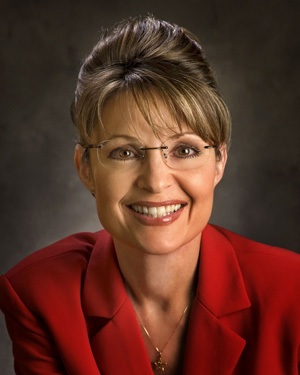 Alaska Governor Sarah Palin 12/4/2006 - ? | 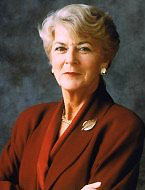 Congresswoman Geraldine Ferraro 1/3/79 – 1/3/85 | 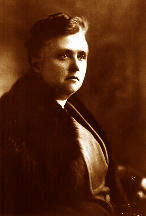 Commissioner Katharine Bement Davis 1914 & 1915 | 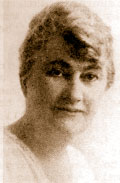 Workhouse Superintendent Mary M. Lilly 1919 - 1928 |
Sarah Palin, Geraldine Ferraro . . . . Katharine Bement Davis? Mary M. Lilly? -- Chapter IV | |||
In the upcoming November 1916 the Presidential election, the nominee of a party perceived as anti-suffrage might suffer severely in those states where women could vote. In a close contest, the electoral votes of those states could be decisive.
TR's decision against running again and the virtual dissolution of the Progressive Party in 1916 prompted many of its suffragist leaders, KBD included, to gravitate to the Republicans.
The GOP nominee, former New York Governor Charles Evans Hughes, endorsed federal woman suffrage whereas the Democratic Party nominee, incumbent President Woodrow Wilson, then still held to leaving the suffrage question for the individual states.
Frances A. Kellor, who had headed the Progressive Party's National Service Committee and had helped shape much of TR's reformist social services agenda, chaired the Women's Committee of the National Hughes Alliance.
KBD, then head of the NYC Parole Commission, served as one of Kellor's committee vice-chairpersons. Both Davis and Kellor had ties beyond their work together in the Progressive Party, the National Hughes Alliance and the suffragist campaigns. Both had studied at the University of Chicago, been involved in Jane Addams' Hull House and were actively interested in criminology and penology.
In 1901, the year Bedford Hills Reformatory Superintendent Davis officially opened the facility to receive inmates (female convicts chiefly from NYC), Kellor wrote her first book Experimental Sociology, Descriptive and Analytical: Delinquents. It advocated a rehabilitative approach, rather than punitive, and stressed environmental and economic factors involved in criminal conduct instead of genetic and biological factors.
In early September 1916, Katharine spoke at the Atlantic City convention of the National Alliance for Woman Suffrage Association in support of NAWSA president Carrie Chapman Catt's position making Congressional passage of the so-called Susan B. Anthony federal constitution amendment, and its ratification by the required number of states, the prime focus of both the NAWSA national organization and state chapters.
Wilson tried to court suffragist support by addressing that same NAWSA convention. His carefully selected words seemed to suggest his becoming more sympathetic to the cause for which, only a few years earlier, he was known to have regarded with distaste.
Nevertheless, his expressing personal belief in woman's suffrage fell short of endorsing a federal amendment.
Most high-profile suffragists appeared to join the Hughes campaign, a seeming repeat of their rejection of Wilson in the 1912 Presidential contest.
Recalling that race, society matron Mrs. J. Borden Harriman wrote in 1928 about her efforts to enlist a prominent woman other than herself to head a Women’s National Wilson and Marshall Association, "All our birds had gone to perch on the suffrage plank" of the Progressive Party. In 1916 they appeared to have flocked to perch on Hughes pledge to support a federal equal suffrage amendment.
So strong was the pitch that the Hughes campaign made for both suffragist support generally, and women's votes where available, it mounted a cross-country whistle-stop train tour featuring leading advocates of female enfranchisement, KBD included.
But they didn't preach suffrage as such. Rather they stressed Hughes record as governor, reformer and jurist and his positions on a variety of questions, including but not limited to suffrage. The Democrats sought to portray the train as a one-issue oriented express.
On Oct, 4, 1916, the Times published a story datelined ON WOMEN'S HUGHES CAMPAIN TRAIN, Cleveland, Ohio, Oct. 3 about pro-Wilson forces spreading rumors that the scheduled train stop speeches would be suffrage advocacy talks. The story noted that at the Buffalo station word was received that hostile train workers had gathered.
Dr. Katharine B. Davis took action promptly. She went to the rear platform of the train and explained to the small group there . . . how the object of all the speeches was to get votes for a man and not for women.
As Dr. Davis finished, seven trainmen . . . . out of sight of the campaigners, shouted for Wilson. . . .
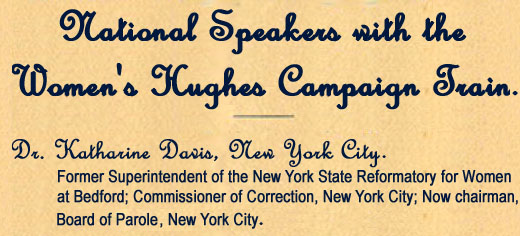 Above is a facsimile of the text, type face and font size of the Women's Hughes Campaign Train speakers list's heading and the list's blurb for KBD. The copies of the list of speakers were distributed in advance to Hughes organizations in communities near the planned train stops to help in drawing rally attendance and news coverage. |
The crowd [at the Cleveland public square] of about 300 with very few women scattered through it, hurled question after question at the speakers . . . . All the speakers, except Dr. Davis, were flustered. [She] withstood the taunts and answered sharply. Finally, when it appear that, if she were to answer the questions one by one there would be little time left, she heatedly asked her tormentors to "leave the meeting" and give her an opportunity to talk about the issues she had specialized in."
Another ON WOMEN'S HUGHES CAMPAIN TRAIN story, published in the
The wire, by its particular wording about the speakers, also had the effect of leaving open the possible inference that the actual train campaigners' oratory had been bought and paid for by those rich society matrons.
DISCOVER A PLOT
Democrats Are Wiring Data on
Backers' Wealth Ahead of
Hughes Special
KATHARINE DAVIS REPLIES
Points Out Wilson Has
Rich Women Supporters Also
. . . The discovery that the Democratic Committee thought enough of the influence of the train to try to combat it, as Dr. Davis put it, was made shortly after the train left Fargo.
The Times quoted the telegram being sent to local Wilson forces leaders along the train route:
"Many women who are actually making the trip to do speaking are professional women who cannot afford the luxury of a special train and campaigning without pay. The women who are financing the junket, however, represent the largest fortunes in the country. . . . "
. . . . When Dr. Davis, since . . . St. Paul, the leader of the band of orators, was shown the telegram, she issued this statement:
". . . . The speakers as a class are not only giving up tier time without remuneration, but in many instances they have contributed to the expense of the train. The speakers have only one motive in making this trip: patriotism, which I believe, is the same motive that impels men to go out on countrywide [campaign] tours.
"It seems to us most unjust that our friends the enemy should try to make capital out of the fact that New York women of wealth should attempt to support their convictions.
"You know, it is equally possible to make out a list of wealthy women who are supporting the Democratic Party.
"For example, there's Mrs. Randolph Hearst, Mrs. Borden Harriman and Mrs. August Belmont, to mention those who occur to me at this moment."
Only one of the New Yorkers listed as speakers on the Hughes campaign train qualified for the term "rich society matron." The others listed as from NY certainly did not: Dr. Katharine Bement Davis, Mrs. Henry Moskowitz, Mrs. Alexander Kohut, Mrs. Mary Antin, and Mrs. Rheta Childe Dorr. Thus, the ratio of self-supporting working women to "rich society matron" was 5 to 1 among those listed specifically as New Yorkers.
Of the dozen or so female speakers not listed specifically as from New York, only few appeared to have qualified for the "wealthy society matron" category. The remainder were women who had won wide-spread recognition and respect by dint of their own labors. These included several published authors, social workers, a union organizer, an education administrator, a female farmer/agriculturist, and even a mountain climber/lecturer.
Three of this group could actually be considered New Yorkers by virtue of their long and/or frequent residencies here, though no state or city tag was listed with their names: Miss Frances A. Kellor, Mrs. A. S. Burke, and Annie S. Peck. Their inclusion would mean only one of the list's nine speakers actually from NY resemble the economic and cultural profile that the Democrats' telegram tried to portray for the "billionaire train" venture.
Mrs. Alice Demorest was the one New Yorker undeniably wealthy, being wife of major real estate businessman William Curtis Demorest whose family had been socially prominent for decades.But even so, she wasn't one of the "idle rich." She was constantly engaged in raising funds for health care and medical facilities for needy children and mothers, for suffrage campaigns, and for preservation of Teddy Roosevelt's birthplace and boyhood home at 28 East 20th St., Manhattan.
Alice was a trustee of the New York Medical College and Hospital for Women and the first president of the Women's Roosevelt Memorial Association that ran Roosevelt House.
Besides KBD, the other listed New Yorkers not fitting the "rich society matron" stereotype that the Wilson forces sought to apply to the "billionaire train" operation included:
Mrs. Henry Moskowitz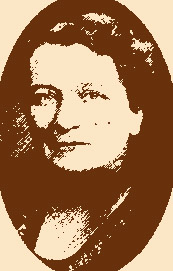
Mrs. Henry Moskowitz sketch.
Click image for her bio by John McHugh on a website maintained by CUNY History Professor Catherine Lavender. , daughter of a Jewish watchmaker immigrant from Prussia. - Rebekah Bettelhelm Kohut, daughter of a Hungarian rabbi. She was born in Kaschau and emigrated as a child to the U.S. with the family.
Educated as a teacher, Rebekah at age 23 married Rabbi Alexander Kohut and became step-mother to his eight children.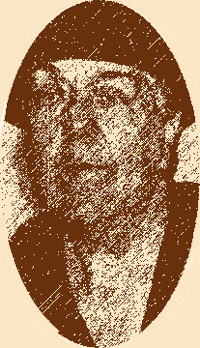
Sketch of Mrs. Rebekah B. Kohut in later years. Widowed at age 30, she earned a living for herself and her family as a educator, setting up the Kohut College Preparatory (boarding and day) School for Girls that taught a mix of secular and traditional Jewish religious subjects.
Rebekah edited a newspaper for Jewish children.
Her memoir My Portion became a best seller.
The book and her activities in Jewish women's organizations led to Mrs. Kohut becoming one of most widely known women in that faith community throughout the U.S.
- Mrs. Mary Antin, born to Esther and Israel Antin June 13, 1881, in Polotzk, formerly part of Lithuania but then part of the Russian Pale of Settlement.
Antin’s first book, From Polotzk to Boston, originated in Yiddish as letters that the 13-year-old Antin wrote to an uncle the year the Antins emigrated to America (1894). Translated into English, they were published in book form five years later.
Her writings, while highly popular with the general reading public, came to be regarded also as worthy of study by social workers and social scientists interested in the challenges faced by immigrants.
To this day, the books of both Mrs. Mary Antin and Mrs. Rebekah Kohut are examined and compared for their different approaches to "becoming an American."
One wonders if those differences may be seen reflected in what they did with their own first names. Antin changed her Russian name Mashke to Mary. Rebekah Bettelhelm retained the less popular spelling of her first name, not changing the "k" to "c."
Both women married older men quite famous professionally within their own particular field. Mary wed Columbia University professor Amadeus Grabau, a renowned geologist. Rebekah wed Rabbi Alexander Kohut, considered by many as the ideological father of Conservative Judaism. The Antin-Grabau marriage, during which a daughter was born, ended in divorce. Death ended the Bettelhelm-Kohut marriage, leaving the widow with eight step-children she cared for as though her own.
- Mrs. Rheta Childe Dorr , reporter, foreign correspondent, editor of the national weekly newspaper, The Suffragist and author of What 8,000,000 Women Want.
Belle Moskowitz initially worked with the Education Alliance settlement house-type program for Jewish immigrants.
Later she worked with the Council of Jewish Women and was associated with the NYS Conference of Charities and Correction. Belle founded a home for delinquent girls.
Her husband, Henry, a co-founder of the NAACP, was a member of Mayor Mitchel's administration as was KBD.
First, he served as president of the Municipal Civil Service Commission and later as Commissioner of Public Markets.
Belle became a major advisor to Al Smith, serving throughout his governorship, his Presidential campaign and his years heading the Empire State Building enterprise..
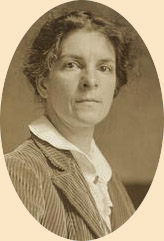 |
Her personal independence being paramount, Rheta continued working as a newspaper correspondent after she married John Pixley Dorr, a Seattle businessman. The marriage ended with permanent separation.
She moved with their son to New York where she became women's news editor of the Post, whose content and style in those days were vastly different from the current tabloid.
Her coverage of working conditions that women and children in the industrial labor force endured helped promote passage of reform legislation.
A practitioner of "advocacy journalism," she made no pretence at being uninvolved and impartial. Dorr chaired the General Federation of Women's Clubs' Committee on Industrial Conditions of Women and Children and worked with the NYC Chapter of the Women's Trade Union League.
The three listed speakers on the women's Hughes campaign train who could be counted as New Yorkers by virtue of their various NY residencies over time, though their names were not so tagged, also didn't fit the "rich social matron" persona that the Democratic operatives sought conjure for the alleged "billionaire train" operation. They were:
- Frances Alice Kellor, political activist who was a major force in the Progressive Party and who organized the Hughesettes cross-country campaign.
Mrs. Alice Snitjer Burke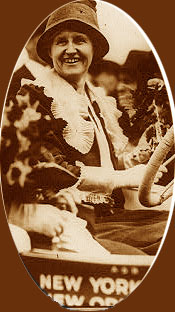
Alice Snitjer Burke pictured behind the steering wheel of her suffragist Saxon motorcar in 1916. Click image to access Library of Congress photo from which this section was extracted. , who drove her way into automotive history as well as suffragist history. - Annie Smith Peck , an extraordinary person in any era -- a classical scholar, mountain climber, world traveler, explorer, author, political activist.
Raised in a single-parent household where her mother worked as a housekeeper and washerwoman, Alice was motivated by a Presbyterian pastor to pursue a career in social reform.
 |
In 1905 Kellor helped organize the National League for the Protection of Colored Women to assist African American women recently migrated to NYC and other Northern cities from the rural South. She served as the first executive secretary of the organization, and in 1910, played an important part in its merging with other three organizations to set up the National League on Urban Conditions Among Negroes, a name shortened in 1920 to the National Urban League.
Under then Gov. Hughes, Kellor had been the New York State Immigration Commission secretary, treasurer and investigator who, with Lillian Wald, issued a stinging report critical of conditions at state work camps along the canal system in 1910. Later she became chief investigator with the State Bureau of Industries and Immigration and managing director of the American Civil League for Immigrants.
In later years, Kellor became a founding member of the American Arbitration Association, its First Vice President, and authored various articles and books on the history of the arbitration movement and organization, and on that methodology as means of resolving conflicts, both within the U.S. and between nations.
She did that by motoring, first throughout New York State in 1915 and then from NY to California and back, April through September 1916.
For both trips the car was a yellow Saxon coupe sporting signs, flags and banners proclaiming suffragist slogans.
The cross-country trip was sponsored by the National American Woman Suffrage Association.
At stops during 10,000-mile-plus journey (visiting every state outside New England), the 2-seater car -- with its top down -- became a podium.
From it, Burke and her relief driver Nell Richardson delivered suffrage speeches to crowds of curious onlookers.
Because few women then owned cars or knew how to drive, the trip generated considerable press coverage, thus helping spotlight the suffrage cause.
That was precisely the aim of the adventure.
Alice had the same purpose in touring upstate during July and August of 1915 with Miss Olive M. Jones, principal of P.S. 120, also known as the Disciplinary School for Delinquent Boys of N.Y., one step removed from an actual reform school.
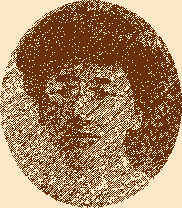 |
A progressive educator, Miss Richman structured the school as an intermediate institution for truant and delinquent youths before society resorted to incarcerating them in reform school.
Miss Jones had been chosen by Miss Richman to run it because Olive's experience as Assistant Principal at P.S. 2 on Henry Street included plenty of interaction with unruly youths and because she too held progressive views on how to deal with them.
Mrs. Burke and Miss Jones started on their suffrage motor tour upstate the day after Alice and her yellow Saxon were featured in a suffragist rally and a votes-for-women torch-light parade in observance of July 4th, both in the Bronx. Shortly after their return, Mrs, Burke and her suffragist Saxon did their thing in at a rally and parade on the Upper West Side.
Mrs. Burke hadn't attempted to set any records with her automotive expeditions, either upstate accompanied by Miss Jones or across the country accompanied by Miss Richardson.
The first woman to drive cross-country (one way, East to West) had been Alice Huyler Ramsey of N.J. She accomplished that in 1909, driving a four-seater Maxwell. But she had three female companions (1 kith, 2 kin) helping push the car when it got stuck in ditches or mud (the helpers didn't drive).
Evidently his working knowledge of sewing machinery was put to good use in his orchard. Snitjer devised a machine to nail shut orange crates and other fruit boxes whose ends might have slightly uneven heights. He obtained a patent for it in 1904 but whether it was developed commercially is unclear.
What seems clear is that his daughter Alice shared his keen interest in things mechanical. Not only did she drive her yellow Saxon, she knew how to perform basic repairs on it.
In 1921, having listed herself on the 1920 application as a New York resident, she too obtained a patent; this for a typewriting machine device to align manifold sheets. What, if any, commercial development of it may have ensued, is unclear.
Mrs. Burke was obviously sufficiently well-off to own a car, maintain it and tour with it for months on behalf of the suffrage cause. But there appears no basis for believing she fit the wealthy society matron mold that the Wilson organization attempted to construct and impose on the Hughesettes. There were no airs of high society about her, nor any mention of her in the society columns.
Mrs. Burke's name emerged in New York newspaper print only in 1912 through 1916 and only in connection with suffrage activities or political activities associated with the suffragist cause. Aside from accounts where the motor tours themselves were the news focus, the stories where her name appeared just made passing mention of her -- handing out campaign literature and buttons, helping run a suffragist grocery store, giving a talk to a church group, speaking at street corner rallies, serving as a Progressive Party convention delegate, and, of course, driving her yellow suffragist Saxon at rallies and in parades. She appeared in those newspaper accounts as a roll-up-the-sleeves, hands-on, get-the-job-done kind of person.
During the latter period, she also attended the University of Michigan where she majored in classical languages, completing the four-year curriculum in three years and graduating with honors in 1878. Miss Peck then pursued postgraduate studies, earning a master's degree in 1881 and securing a professorship at Purdue teaching Latin.
As the first woman student at the American School of Classical Studies in Greece, Annie took full advantage of opportunities to travel throughout Europe. Upon her return to the U.S., she accepted a teaching post at Smith College but resigned in 1892 when her lectures, lantern shows, and writings earned her a sufficient livelihood that also allowed her enough time of her own to explore the world.
At age 44, Miss Peck decided to have a go at mountain climbing, an avocation rarely taken up by women in that era. She became only the third woman to scale the Swiss Matterhorn -- the first to do it in trousers, not a skirt.
In 1908 Annie became the first person to conquer the northern peak of Mount Nevado Huascarán, then believed -- at 22,205 feet elevation -- the tallest in the Americas. It was named Cumbre Aña Peck in her honor by the Lima Geographical Society in 1928. At the age of 61, she climbed Mt. Coropuna in Peru in 1911 and placed a "Votes for Women" banner at the top.
Throughout her various expeditions Miss Peck took photographs and made extensive notes, using both to write books, magazine articles and newspaper features about her adventures as well as for turning out travel guides.
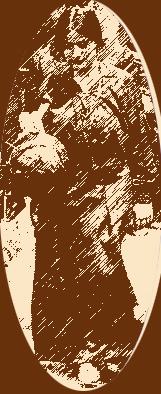 |
May I be permitted, through you, to offer a suggestion to our Commissioner of Correction. Dr. Katharine Davis. as to the fractious young woman [anarchist Becky Edelson] engaged in a hunger strike, a suggestion the principle of which might, to my mind, be applied in many cases in our city and country to very great advantage.
Dr. Davis did well in permitting no interviews with reporters or others -- possibly no letters. She would do still better if she withheld all information from the general public as to this person’s conduct or that of any other individual making trouble of any sort, or even of any one’s behavior, good or ill.
To have their names in the paper, to be martyrs for their cause -- that of anarchy and destruction -- seems to them quite worthwhile; but if nobody knew whether they ate or starved or were in solitary confinement until they came out and told their friends their own tales, it would be a different matter. . . . .
ANNIE S. PECK.
New York, July 26, 1914.
Two days after the Times printed Peck's letter suggesting that the Correction Commissioner impose a news blackout on Edelson's hunger strike status, Davis did just that.
In a news story published July 31, the Times reported:
The Times quoted Miss Davis as announcing:
Miss Davis Trying New Method
of Fighting Hunger Strike
The principal occupation of Becky Edelson during the progress of her hunger strike in the [Blackwell's Island] Workhouse has been to lie on a couch in her cell reading the stories about herself in the daily newspapers, according to Commissioner of Correction Davis.
Miss Davis reached the conclusion yesterday that it was time to close down upon news about Miss Edelson, as she felt that a newsless hunger strike would be much sooner broken than one in which the striker’s hope was buoyed up each day by publicity.
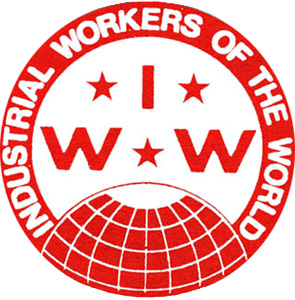 |
The Times quoted her announcing:
"Hereafter I must decline to give information as to the health or conduct of Miss Edelson and the other members of the I.W.W. [International Workers of the World aka Wobblies] who are inmates of the institutions at the Department or Correction.
"These persons will receive exactly the same treatment as all other prisoners. . . . It is not in the interest of discipline or in the interest of the democratic conduct of our institutions that these prisoners should receive consideration over that accorded to other prisoners or be singled out for newspaper notoriety."
The prison hunger strike as a tactic to gain attention and sympathy for their various causes had been used by anarchists, revolutionaries and some radical reformers in other countries. Edelson's 1914 resort to it -- at the Queens jail in April and at the Workhouse in July -- was regarded as a first in this country.
Significant outcry from suffragist groups and other feminists organizations had attended employment of that tactic in other countries, but failed to materialize in Becky's case.
The Times, in a July 23rd story, explained:
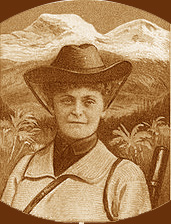 |
One wonders whether the Edelson case ever came up for discussion between them as Dr. Davis and Miss Peck traveled together on the Hughes campaign train two years later. Did Annie ask if her letter in the Times had prompted then Commissioner Davis to impose a news blackout on Becky's hunger strike? Might Katharine have answered she had been thinking along those same lines herself but that Annie's letter served to re-enforce it as right way to go in the situation and triggered the decision to do so? We don't know what they said but speculating -- if clearly labeled as such -- is part of the fun of reflecting on history's twists, turns and tangles.
The backgrounds of the nine New York women featured as speakers aboard the Hughes campaign train have been set forth here in some detail. This is so that the readers can judge for themselves how unjustified and unfair was the Democratic telegram's wording to leave open the inference their oratory on behalf of Hughes' candidacy had been bought and paid for by wealthy society matrons. The readers' judgment on the NYers can also be extended to the non-New York speakers in the so-called "billionaire train" operation because their backgrounds likewise contradicted the orators-for-hire image that the Democrats sought to suggest befit them.
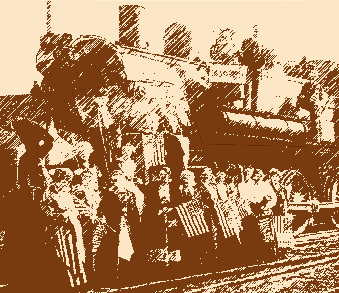 |
The Times the next day reported:
Although following the general lines of his previous speech, Colonel Roosevelt diverged at times to praise Oscar S. Straus, the Chairman of the evening, and Charles Anderson, the ex-Internal Revenue Collector and first Negro to hold so important an office. Mr. Anderson was seated on the stage. Among the others on the stage were Commissioner of Correction Burdette Lewis, Dr. Katharine B. Davis, Park Commissioner Ward, Judge Rosalsky, Mary Dreier. and the women of the Hughes campaign train.
Wilson won the all but one of the Western states where women could vote. Their going with Wilson was crucial to his victory in that close race decided by a margin of fewer than two dozen electoral votes. The Democratic campaign pitched on "Wilson has kept us out of war" was later credited with having more appeal with women where they could vote than the Hughes' endorsing a federal constitutional amendment so women in the other states could also vote.
Once the Presidential contest ended, New York suffragists who had campaigned for rival candidates put those differences aside so as to concentrate on winning passage of the state constitution suffrage amendment.
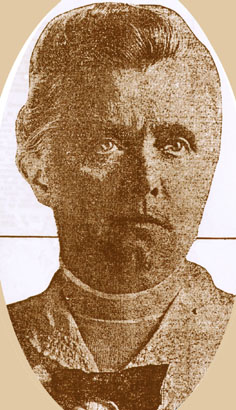 |
- by Wilson's increasingly more suffrage sympathetic stances, gestures and expressions stirring up Democratic organizational support that had been largely absent in 1915, and
- by continued support from key Republicans, such as GOP Gov. Charles S. Whitman (who was a member of the Men's League for Woman Suffrage).
New York voters on Nov. 6, 1917, adopted the proposed state constitution amendment 646,500 to 555,000.
While the measure barely squeaked through upstate, the downstate vote -- particularly NYC's -- gave the amendment its substantial majority.
Manhattan, where KBD had been the Woman Suffrage Party director, gave passage of the amendment its largest winning vote margin among the five boroughs even though Brooklyn had more voters casting ballots.
Based on the borough tallies in the Times of Nov. 8, 1917, Manhattan gave amendment passage 3,564 more votes than Brooklyn did even though Manhattan had 5,566 fewer voters casting ballots than did so in Brooklyn.
Thomas C. McCarthy,
Webmaster
| Commissioner Davis' Celebrity Preceded Ballot Placement . . . . Commissioner Davis' Grandma an Abolitionist & Feminist . . . . Rhoda Bement Upset Over Abolition Meeting Non-announcement . . . . Elders' Charges Against KBD's Grandma Bement . . . . Abolition, Prohibition, Feminism Connection . . . KBD's Mom, Grandma at 1st Women's Rights Convention. | ||
KBD Agrees to Campaign for Suffrage If OK With Mayor . . . . City Hall Reporters Foresee Change Coming With KBD. . . . . . KBD Begins Suffrage Campaign: Pageant, Ball, Rally, Speeches . . . . KBD on TR Party State Ticket . . . . Mayor Mitchel Not Only OKs, But Endorses KBD Candidacy . . . .Support for KBD Candidacy Crosses Party Lines . . . . A Sister Reformatory Superintendent a District Delegate Candidate . . . . | ||
Women Delegate Candidates Lost But Cause Gained Ground . . . . Woman Suffrage Telephone Day at DOC . . . . Planning Ahead to Use the Vote to Promote Good Government . . . . KBD Hosts Suffragist Tea in Municipal Building . . . . KKBD & 'Her Civil Service Girls' in Suffrage Parade . . . . In Face of Defeat, Fighting Spirits Rose High. . . . . | ||
Hughes Backs U.S. Suffrage Amendment, KBD Backs Hughes . . . . KBD a Leader on Hughes Women's Campaign Train . . . . 8 of 9 NY speakers on Hughes train not 'rich society matrons' . . . . Besides KBD: Mrs. Henry Moskowitz, Rebekah Bettelhelm Kohut, Mrs. Mary Antin, Mrs. Rheta Childe Dorr, Frances Alice Kellor, Mrs. Alice Snitjer Burke, Annie Smith Peck . . . . TR Welcomes Back KBD, Other 'Hughesettes' . . . . | ||
'Women Owe No One Party for the Vote' . . . . NY State Voting Rights Win Sped 19th Amendment . . . . DOCer/Assemblywoman Helps Ratify U.S. Suffrage Amendment . . . . Mrs. Lilly: Wife, Mother, Widow, School Teacher & Administrator, Lawyer, Club Woman, Editor, Legislator, Penologist . . . . Mrs. Lilly's Interaction With Anna Moskowitz Kross . . . . Her 1 Year as Assemblywoman Seen by Supporters as Effective . . . . Appointed to DOC on Memorable Day in NY Suffrage History . . . . Lilly Re-election Bid Hit on Election Eve . . . . Mrs. Lilly's Interaction With Katharine Bement Davis . . . . What Would Davis & Lilly Have Thought of the Collective Fact of Ferraro, Clinton, & Palin Candidacies? | ||
on main texts and captions, excluding material quoted and cited from other sources.
All rights on original text and caption wording reserved.
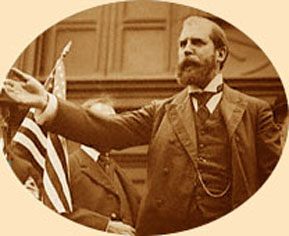
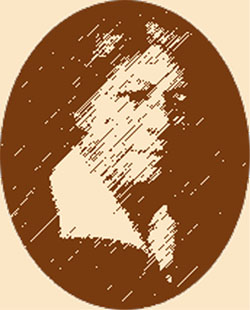
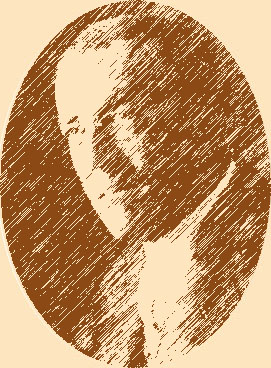
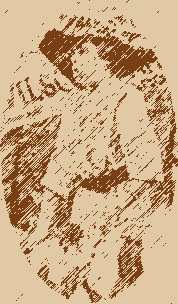
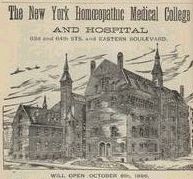
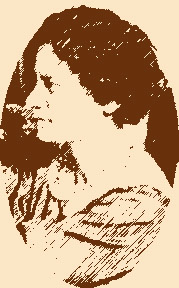
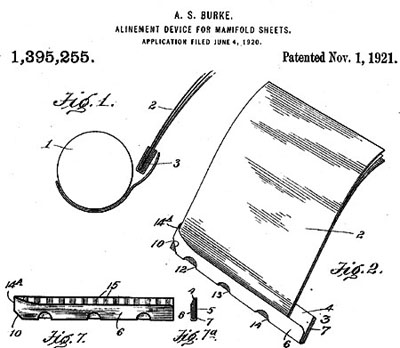
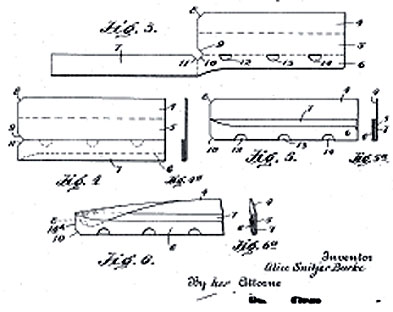
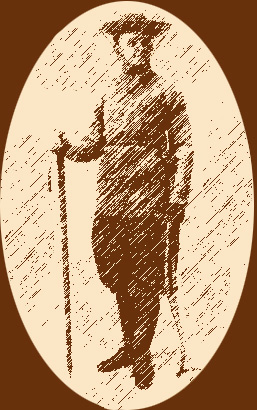
No comments:
Post a Comment